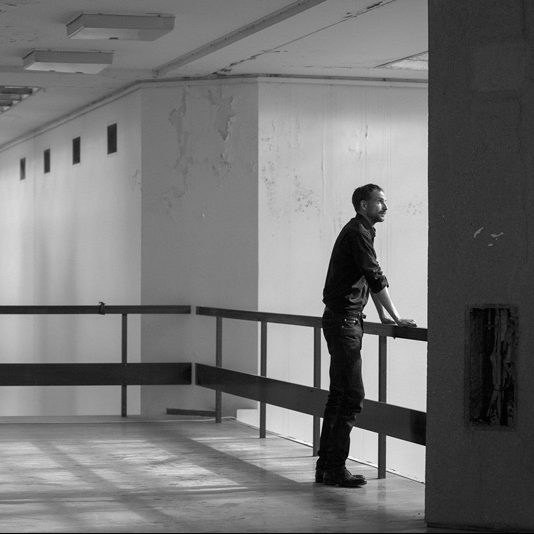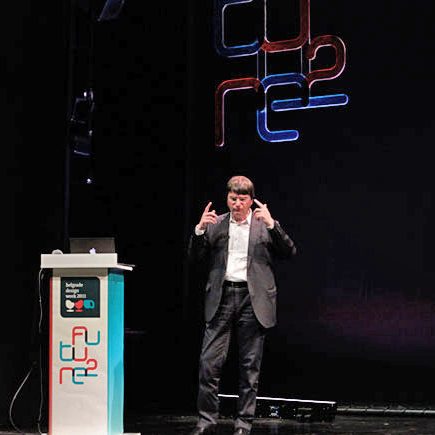
INTERVIEW WITH JOHANNES NORLANDER – EGO MAGAZINE
Please, introduce Yourself…
My name is Johannes Norlander. I am an architect. I have my office based in Gothenburg, in Sweden, in the west coast, second largest city. We are doing everything, from furniture to residental buildings at the moment.
Yours impressions about BdW ?
I think it’s extremely important event. I think it is very interesting to see such blend of lectures, different professions, I think that it’s what is conference is about – to mix all different professions. For me, that’s quite unique.
The theme of the conference is innovation – in the designing process, in materials, in personal approach? My approach is maybe a little bit different, than approach
to innovation of those people we have heard talking here.
It has to deal with sustainability. Sustainability is technic, it’s new materials, it’s in green environmental materials, and things that we use every day work at the office; they all have to do with sustainability in terms of quality, long lasting architecture; and it also has to do with aesthetics. What
we are trying to do now is to be more local, to do projects with roots within the context where we work. And we try to establish architecture that has value for the community.
Tell us about the lausanne Jardins project…
It’s a very interesting small project. It’s a garden pavilion they will be using for a fair that is to be held every second or third year in Lausanne, where they invite designers to design pavilions and green areas in the city. For us, it’s a very nice opportunity: first of all – to work in another context, and also to do a project that’s more artistic, more in the field in between architecture and product design.
More sculptural?
Exactly! And I realy enjoy that kind of projects. As an architect, you do residental and public buildings, but it’s interesting to do a project that is not “for a profit”.
It’s a table with a garden “served” on the top?
It’s a metal structure – a thin metal plate with pillars, and over the structure we placed a pile of soil. The idea is to plant the seeds in the autumn; so in the autumn it’s just a pile of soil, and than in the winter you get snow, and than in the spring – it starts to grow; so it will change during seasons, and it will be quite abstract in the context of an urban city. So it will be like we work with furniture and houses – we want to invite people to observe, to get the feeling of reminiscing on childhood, or nature, to create some kind of affect.
The scale of this project is? How big it is?
It’s a very small scale. It’s just a pavilion, 10 by 7 meters, it’s just 2,5 meters high…
But it’s a huge table!
Yeah, it’s more like a roof, a metal roof. For me, quality does not have anything to do with scale.
Do You make a difference between architectural designing and designing furniture?
Of course, the complexity is for sure different. And the responsibility. But our approach is the same: finding the essence in the funcion, or in the aestetic. The bigger project – the more regulations, more politics, less creativity, more and more narrow part in creativity.
I saw your House Morran, very interesting – with black walls. What kind of people are Your clients?
In this case – a young family, with one kid. They wanted house to be – maybe not all traditional in the way it is build – but they wanted something that reflected their point of view. They are oppen minded people, working with design; so they wanted to have something different, and maybe something “outside of the box”.
Low cost and good design?
Exactly. But it’s not that easy. That is a reason we don’t do that many projects. Maybe it’s not architecture for everyone? Too strange for some people? But I think it’s changing. A new, younger generation has other needs.
What is Your favorite material to use?
When I was younger I was not really into materials, I was more into shape, volume… but, the older I get, the more I understand – architecture is material. So, I really enjoy emphasising the difference in materials, the structure, what’s bearing, what’s not. For me, it’s PURE materials, we never use colors at the office. It’s all black and white.
How would You describe good design?
It doesn’t matter if it’s modern, postmodern, minimalist – as long as it is done consequent – from the sketch, first draft, to the final building, when everything is done with a goal; when you find an essence in the first idea. But, today it’s not often that you see that. But, there is lot of interesting architecture in different scenes, we are very fond of what is going on in present Switzerland or Austria; that has a lot to do with the fact that architects have a good role in the project, so they have a lot to say when it comes to decisions. But, they also have a strong tradition in craftsmanship. That’s extremely important for working in architecture. To elevate the level of architecture, you have to have high education and good craftsmanship.
Trackback from your site.
